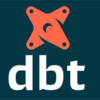Tag: ETL
DBT : Custom macros that could be used in real-world scenarios with DBT
DBT’s macro system is quite powerful and can help you encapsulate and reuse SQL code across your project. Here are…
DBT : Ensuring Robustness in Data Pipelines : A DBT Testing Guide for Data Practitioners
DBT (Data Build Tool) has a robust testing framework that enables you to maintain data integrity by writing tests for…
DBT : Enhancing Data Quality with DBT : Practical Guide for Data Analysts
Data quality is crucial for any business relying on data-driven decision-making. Poor quality data can lead to misguided strategies, wrong…
DBT : Understanding the Concepts of “Sources” and “Seeds” in DBT with Practical Examples
In DBT’s world, the terminology can seem a bit mystifying to newcomers, especially when we talk about “sources” and “seeds”….
DBT : Using DBT (Data Build Tool) for Testing and Capturing Test Results
One of the great features of DBT is its testing framework. DBT allows us to validate the correctness and reliability…
DBT : Leveraging DBT Macros : Macro that dynamically adjusts the S3 bucket path
Leveraging DBT Macros for Environment-Specific S3 Bucket Paths: A Detailed Guide Data analytics is all about working smart, not just…
DBT : Harnessing DBT Snapshots to Track Historical Data Changes
One of its key features of DBT is the ability to capture historical changes in data over time using snapshots….
DBT Tests: Ensuring Data Quality in Your DBT Project . Write and run custom data tests.
One crucial aspect of data transformation is ensuring that your output data meets certain quality standards. DBT tests are an…
DBT Sources: Streamlining Raw Data Management in Your DBT Project
DBT sources are a powerful feature that helps in managing raw data in your DBT project. They provide a way…
DBT : Managing dependencies between DBT models. Explain the use of the ref() function?
Managing dependencies between DBT models is essential for ensuring the correct order of execution and maintaining data consistency. The ref()…








